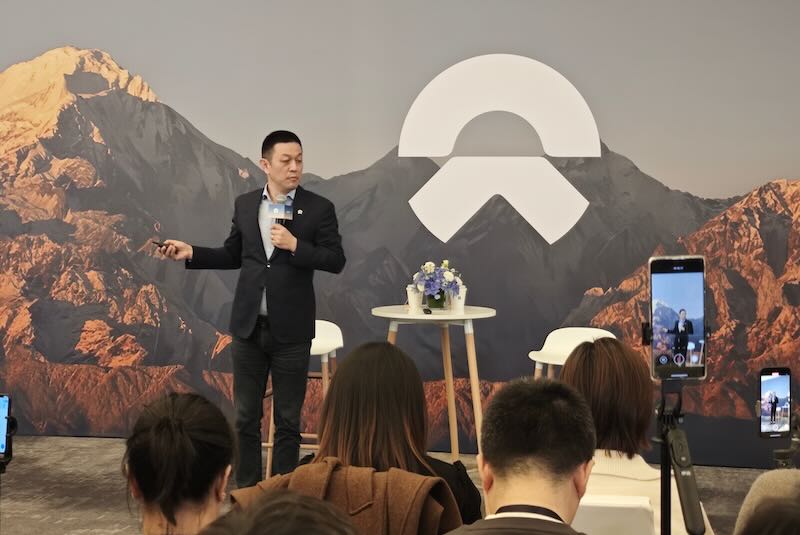NIO’s ambitious journey toward profitability has reached another pivotal moment. The Chinese electric vehicle manufacturer’s leadership recently outlined their roadmap for achieving financial sustainability, targeting the fourth quarter of 2025 as their breakthrough period. With years of heavy investment behind them and mounting pressure to demonstrate returns, NIO’s electric dreams now face the ultimate test of market viability.
NIO’s founder and CEO William Li delivered a compelling message about the upcoming transition from investment-heavy operations to profit-generating business cycles. His remarks underscore the critical nature of 2025 for the automaker’s long-term survival and success in the increasingly competitive EV landscape.
NIO’s Q1 2025 results paint a complex picture of growth amid persistent losses. Revenue climbed to RMB 12.03 billion, representing a 21.5% increase YoY a figure that demonstrates NIO’s expanding market reach. Vehicle sales specifically contributed RMB 9.94 billion, marking an 18.6% improvement from the previous year’s comparable period.
However, the financial reality remains challenging. Operating losses expanded to RMB 6.42 billion, showing a 19.0% increase, while net losses reached RMB 6.75 billion — up 30.2% compared to Q1 2024. Figures reflect the ongoing tension between growth investments and immediate profitability concerns.
NIO’s gross margin metrics tell another part of the story. Vehicle sales achieved a 10.2% gross margin, while overall operations maintained a 7.6% margin.
NIO’s delivery performance has shown remarkable strength throughout the quarter. NIO successfully delivered 42,094 vehicles in Q1, achieving a substantial 40.1% YoY increase. Growth trajectory indicates strong consumer demand for NIO’s electric vehicle offerings despite broader market uncertainties.
Looking ahead, management projects second-quarter deliveries between 72k and 75k units. Projections represent YoY growth ranging from 25.5% to 30.7%, while demonstrating an even more impressive quarter-over-quarter jump of 71% to 78%. Such dramatic sequential growth suggests the company’s production capabilities are scaling effectively to meet market demand.
The delivery acceleration comes at a crucial time for NIO’s electric dreams, as the company attempts to demonstrate operational leverage from its infrastructure investments.
William Li’s strategic philosophy centers on differentiation through innovation rather than aggressive pricing strategies. He explicitly stated that automakers shouldn’t compete solely on price points, instead focusing resources on innovation, user experience, product quality, and service excellence. Approach positions NIO’s electric dreams as premium offerings in an increasingly commoditized market.
William’s perspective reflects lessons learned from the industry’s recent price wars, which have compressed margins across the sector. By emphasizing value creation over cost competition, NIO aims to build sustainable competitive advantages that justify premium positioning.
This strategy requires substantial ongoing investment in research and development, infrastructure development, and service network expansion—all factors contributing to current losses but potentially driving future profitability.
William’s reflection on the company’s investment journey reveals the scale of NIO’s commitment to market leadership. From 2022 to 2024, NIO significantly increased spending across multiple operational areas, including research and development, infrastructure, sales networks, and service systems. These investments represent the foundation for the projected profitability in Q4 2025.
William noted that back in 2021, the company’s smallest quarterly loss was approximately 500 million RMB. Current loss levels, while larger in absolute terms, occur alongside substantially higher revenue and delivery volumes, suggesting improved operational leverage potential.
NIO’s electric dreams require this patient capital approach, as the EV industry demands significant upfront investments before achieving sustainable returns. NIO’s willingness to maintain this strategy despite short-term losses demonstrates confidence in their long-term market position.
The competitive landscape for electric vehicles continues evolving rapidly, with traditional automakers and new entrants vying for market share. NIO’s positioning as a premium brand with innovative battery-swapping technology provides potential differentiation, though execution remains critical.
The company’s infrastructure investments, particularly in battery-swapping stations and service networks, represent significant barriers to entry that could protect market position over time. However, these same investments contribute to current losses and require careful management to achieve projected profitability timelines.
NIO’s electric dreams face validation through operational execution over the coming quarters. Ability to scale production, manage costs, and maintain premium positioning will determine whether NIO achieves its ambitious profitability targets.
With Q4 2025 approaching as the make-or-break period, NIO’s journey from startup losses to sustainable profits will test whether these electric dreams can finally generate the spark of profitability the company desperately needs.
Related Post
NIO Supplies McLaren with Advanced 4680 Battery Cells for Hybrid Supercars
NIO Firefly First Drive: The Compact EV That Transforms Skepticism Into Driver Delight
NIO CEO William Li Reveals Ambitious Plan to Double Vehicle Sales to 440k Units by 2025
